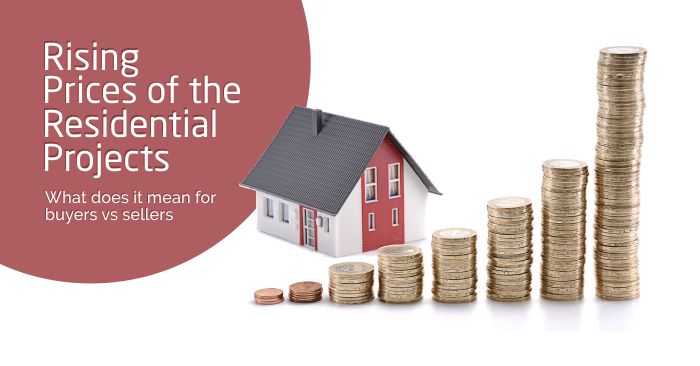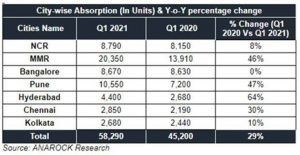
April 28, 2021 | 15 mins read
The real estate market is on the path of resurgence after struggling through the aftermath of the first wave of the pandemic. It wasn’t an easy recovery; lucrative buying circumstances and a massive shift in buyer sentiment led to this growth. Now one can witness robust housing sales and an average appreciation of 1% in property prices in the first quarter itself.
Major cities in the country experienced a consistent increase in demand and a staple increase in prices. Initially, the lowered rates of home loans made home buying desirable. These incentives were to drive the fence-buyer to registration, but now this end-user led demand market chain is breaking. Due to the increase in demand, the seller is regaining market control. This shift is bound to have a significant effect on property prices.
A study by Anarock reflected:

In the Q4 of 2020, affordability had become synonymous with the realty landscape. Whether it was the festive splurge or growing need for home-ownership, this gave a push to the market, spiking the sales considerably. Therefore, the inventories started to clear out and the power that the buyer held moved back to the seller. Naturally, when the seller gains control, the prices are also dictated by their forces. It is an opportunity for the market but a sticky situation for the buyers.
Apart from the power shift, many market-driven circumstances play a crucial role in the forecasted price rise. Some of them being:
A report by 99acres suggested that the incentives and deals real estate developers had used to attract the buyers paid off and led to a 20% year-on-year hike in sales of housing units in January-March 2021. This increase boosted the morale of developers, and the impending pre-COVID price rise came to fruition. The pattern of growth is leading to newer projects and has a direct impact on the prices.
The increase in demand led to fluidic clearances of untouched inventory. The developers gave lucrative offers, and that married to easier home loans boosted their sales. With the older property sold off, there was a marginal increase in the market value of new properties.
The home buyer is not willing to settle for anything less than a mid-segment luxury. The fence buyer is now demanding privacy, security, space, convenience, community living, and a more extensive offering of amenities. Therefore, in comparison, newer properties will come at a higher price than earlier.
The developers, big or small, have had to take a step back to re-evaluate the property prices with the sudden rise in the prices of raw materials and their unavailability. The prices of steel, cement and other core raw materials increased in the new budget, which affects the property prices.
The market was on a price hike rally before the pandemic hit it, and now this long overdue is coming to life again. The market dynamic suggests that Q2-Q3 of 2021 will see a further increase in property prices. The buyers who didn’t go through with their purchase earlier might have to pay the price for that now. Moreover, the high inflation and demand rebound are playing their part, awaiting what the second wave of COVID-19 will bring on. Therefore, all the fence-buyers should be wise and invest now.
Goyal House,
Opp Karnavati Club,
S G Highway, Ahmedabad - 380015
info@goyalco.com
+91 757500 0000, +91 797111 8111
Unit 203, 2nd Floor, Barton Center, 84, MG road, Bengaluru - 560001 info.bng@goyalco.com +91 80888 66000, +91 80888 33000
